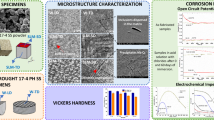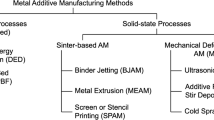Summary
The influence of the powder fraction on the properties of the Böhler high speed steel S290 Microclean® was investigated. Therefore, the standard powder was sieved into six different powder fractions which were hipped, rolled/forged, soft annealed and tempered. Microstructure characterizations were made by scanning electron microscope (SEM), x-ray diffractometer and an image analyse software. Next to the estimation of the fracture toughness tensile tests were performed. The investigations indicated that the carbide size distribution was influenced by the powder fraction. However, the different powder size classes showed no effect on the mechanical properties. Though, there was no significant improvement of the mechanical properties by a further particle size reduction of the standard powder at the same production parameters.
Zusammenfassung
Der Einfluss der Pulverfraktion auf die Eigenschaften des pulvermetallurgisch hergestellten Schnellarbeitsstahls Böhler S290 Microclean® wurde untersucht. Hierzu wurden sechs Pulverfraktionen unterschiedlicher Pulverkorngrößen von einem Standardpulver ausgesiebt und kleintechnisch (Hippen, Walzen/Schmieden, Weichglühen) bis hin zum vergüteten Material verarbeitet. Mittels Rasterelektronenmikroskop (REM), Bildanalysesoftware und Röntgendiffraktometermessungen (XRD) sind Mikrostrukturcharakterisierungen durchgeführt worden. Neben der Bestimmung des Härte-Anlassverhaltens wurde auch die Rissbruchzähigkeit ermittelt. Es stellte sich heraus, dass ein Einfluss der Pulverfraktion auf die Karbidgrößenverteilung gegeben ist, was jedoch keine nennenswerten Auswirkungen auf die mechanischen Eigenschaften zur Folge hat. Insgesamt haben die Untersuchungen ergeben, dass kein Bedarf zur weiteren Verkleinerung des schon sehr feinen Standardpulvers, bei gleichzeitiger Beibehaltung der Herstellparameter, besteht, da bei diesen Versuchen kein signifikantes Verbesserungspotenzial der getesteten Eigenschaften festgestellt wurde.
Similar content being viewed by others
Literaturverzeichnis
Berns, H.: Hartlegierungen und Hartverbundwerkstoffe. Springer-Verlag Berlin, Deutschland, 1998
Mesquita, R. A. und C. A. Barbosa: High speed steel produced through conventional casting, spray forming and powder metallurgy, in: J. Bergström, G. Fredriksson, M. Johansson, O. Kotik, F. Thuvander (Eds.), The use of Tool Steels – Experience and Research, Proc. of the 6th International Tooling Conference, Vol I, Karlstad, Schweden (2002), 325–337
Grinder, O.: PM Production and Applications of HSS, www.hssforum.com/Aachen/05_Grinder.pdf, April 2007
Ebner, R., H. Leitner, F. Jeglitsch und D. Caliskanoglu: Methods of property oriented tool steel design, in: F. Jeglitsch, R. Ebner, H. Leitner (Eds.), Tool steels in the next century, Proc. of the 5th International Conference on Tooling, Leoben (1999), 3–24
Broeckmann, C., A. Packeisen und W. Iheisen: Fatigue of carbide rich materials, in: M. Rosso, M. Actis, D. Ugues (Eds.), Proc. of 7th International Tooling Conference, Vol. I, Turin, Italy (2006), 3–12
Muro, P., S. Gimenez und I. Iturriza: Sintering behaviour and fracture toughness characterization of D2 matrix tool steel, comparison with wrought and PM D2. Scripta Materialia 46 (2002), 369–373
Poech, M. H., H. F. Fischmeister und K. Hummert: Fracture toughness of PM-HSS – the influence of primary carbide distribution, in: G. Hackl, B. Hribernik (Eds.), Proceedings – First International High Speed Steel Conference, Leoben, Austria (1990), 73–80
Blaha, J., C. Krempaszky und E. A. Werner: Carbide distribution effects in cold work tool steels, in: J. Bergström, G. Fredriksson, M. Johansson, O. Kotik, F. Thuvander (Eds.), The use of Tool Steels – Experience and Research, Proc. of the 6th International Tooling Conference, Vol I, Karlstad, Schweden, 2002, 245–252
Lippmann, N., A. Lehmann, Th. Steinkopff und H.-J. Spies: Modelling the fracture behaviour of high speed steels using finite element method. Comp. Mat. Sc., Vo. 7, Issues 1–2 (1996), 123–130
Broeckmann, C.: Microstructure and mechanical properties of tool steels, in: F. Jeglitsch, R. Ebner, H. Leitner (Eds.), Tool steels in the next century, Proc. of the 5th Int. Conf. on Tooling, Leoben, Austria (1999), 49–58
Gahm, H., K. D. Löcker, H. Fischmeister und S. Karagöz et al.: Morphologie, Sekundärdendritenarmabstand und Kühlrate von gasverdüsten Metallpulvern, in: F. Jeglitsch, G. Petzow, Fortschritte der Metallographie 18, Sonderbände der praktischen Metallographie, Berichte der VII. Internationalen Metallographie-Tagung Leoben, Dr. Riederer-Verlag GmbH, Stuttgart (1987), 479–490
Morris, D. G., Met. Sci. 16, 457 (1982)
Anderson, T. L.: Fracture Mechanics – Fundamentals and Applications, Third Edition, CRC Press, Taylor & Francis Group, Boca Raton, Florida (2005)
Author information
Authors and Affiliations
Rights and permissions
About this article
Cite this article
Zuber, M., Winkler, H., Schweiger, H. et al. Einfluss der Pulverfraktion auf die Eigenschaften von pulvermetallurgisch hergestelltem Schnellarbeitsstahl. Berg Huettenmaenn Monatsh 155, 136–141 (2010). https://doi.org/10.1007/s00501-010-0550-2
Issue Date:
DOI: https://doi.org/10.1007/s00501-010-0550-2




